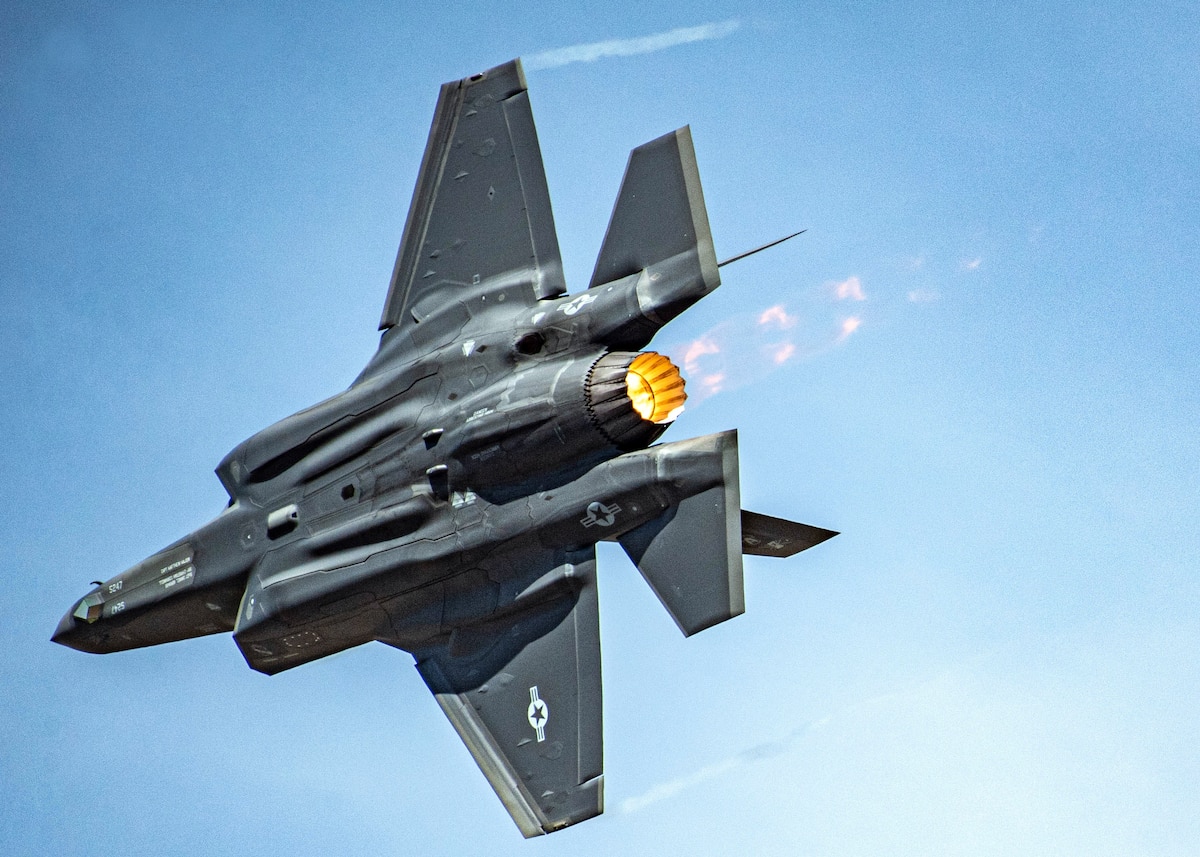Japan announced on June 29 that the country’s private engineering firm IHI would take on the responsibility of repairing engines of F-35 fighter jets utilized by both the Self-Defense Forces and the US military.
Bloody Irony! China Uses American Tech To Spy On US, India Uses Chinese Tech To Spy On China; Is It Coincidence Or Globalization?
The highly advanced F-35 fighter jet, known for its state-of-the-art technology and stealth capabilities, has emerged as a critical element in deterring potential adversaries in the Indo-Pacific region.
The Japanese Self-Defense Forces (SDF) operate the F-35A, a conventional-takeoff-and-landing (CTOL) variant. However, Tokyo also has plans to introduce the F-35B, a short take-off and vertical-landing (STOVL) variant, into active service.
The introduction of the F-35B is motivated by its advantageous capabilities, as it allows for easier take-offs and landings, especially at Japanese bases and airports equipped with relatively short runways.
IHI will be responsible for repairing both the F-35A and F-35B aircraft at its plant in Tokyo, as stated by Asia Nikkei. The move is anticipated to significantly enhance the readiness of both the US and Japanese forces.

In addition to Japan, several other key US allies, including Australia, South Korea, and Singapore, have operational fleets of Lockheed Martin-manufactured F-35 fighter jets in the region.
The EurAsian Times reported that over the past few years, the proliferation of these stealth fighter jets in the Indo-Pacific had played a crucial role in deterring China and North Korea.
In a potential conflict with China, Tokyo could play a key role in repairing US-made F-35 fighter jets belonging to allied countries.
The latest announcement by the Japanese Ministry of Defense is part of the country’s preparations for a potential Chinese invasion of Taiwan or any threat to its territory around the Senkaku Islands in Okinawa Prefecture.
The defense ministry highlighted the importance of this project for supporting F-35 operations, sustaining a strong domestic defense industry, and strengthening the Japan-US alliance.
Japan-Based F-35 Maintenance Depot
In 2014, the US Department of Defense designated Australia and Japan as key partners responsible for airframe and engine maintenance for the F-35 aircraft in the Asia-Pacific region.
Under this arrangement, the two nations were assigned specific roles in sharing the responsibility for heavy airframe maintenance, overhaul, repair, and upgrade (MORU). Japan was tasked with covering the northern part of the region, while Australia took charge of the southern part.
Mitsubishi Heavy Industries in Japan began conducting inspections and repairs of these advanced aircraft at its facility in Aichi Prefecture in 2020. Australia has also established a similar base to support maintenance and servicing needs.
That being said, Tokyo is poised to become one of the largest operators of the F-35 aircraft. As a staunch ally of the United States, Japan has plans to acquire a total of 157 F-35 airframes, out of which 42 will be the F-35B variant.
Nonetheless, the new announcement follows earlier reports of the US considering the involvement of Japanese private shipbuilders for the repairs, maintenance, and overhaul of its warships.
The potential decision to service warships at off-base Japanese private shipyards brings several advantages, including workload distribution. US shipyards are facing a significant burden due to the new orders and the repair requirements of existing ships in service with the US Navy.
Meanwhile, the Japanese government has also taken significant steps to strengthen its domestic defense industry. One such decision involves harmonizing the standards for domestically produced defense equipment with those of the United States and Europe.
This alignment aims to reduce maintenance costs and increase business opportunities for Japanese defense companies. By adopting international standards, Japan can enhance interoperability with its allies, streamline logistics, and foster technological advancements in its defense sector.
The plans are formulated in response to the rising costs associated with the maintenance and replacement of parts for defense equipment, which can be attributed to the progress in radar and sensor technology.
Generally, the Self-Defense Forces (SDF) equipment has adhered to its own proprietary standards, resulting in challenges when it comes to part interchangeability with other military forces. This lack of standardization has made it difficult to exchange parts and components.
Overall, Tokyo is pursuing a strategy to align its defense equipment supply chains with its allies and friendly nations. The goal is to establish complementary supply chains and amplify cooperation on procurement.
- Contact the author at ashishmichel(at)gmail.)com
- Follow EurAsian Times on Google News